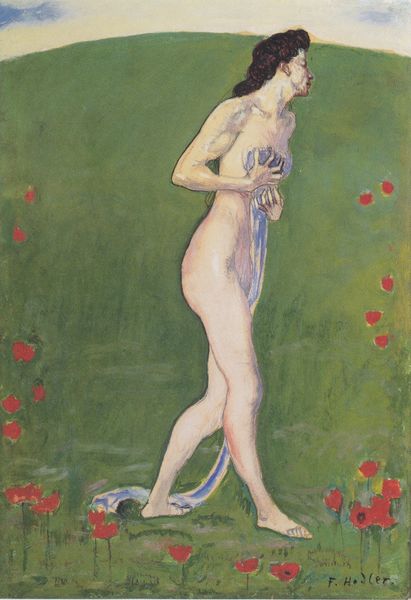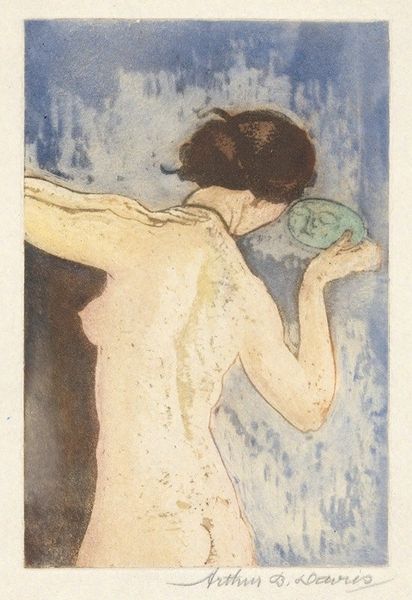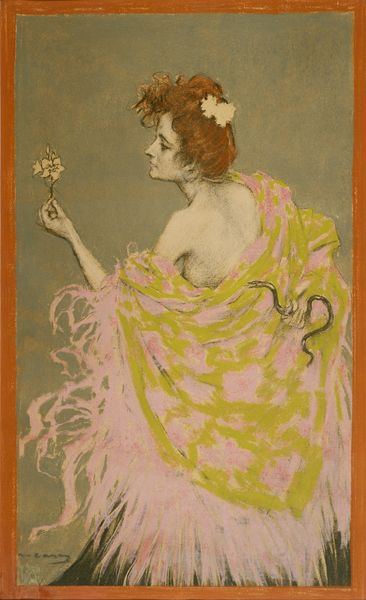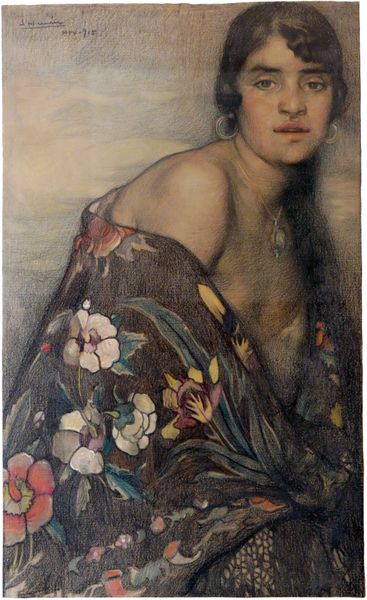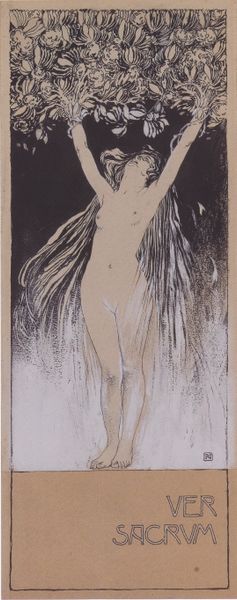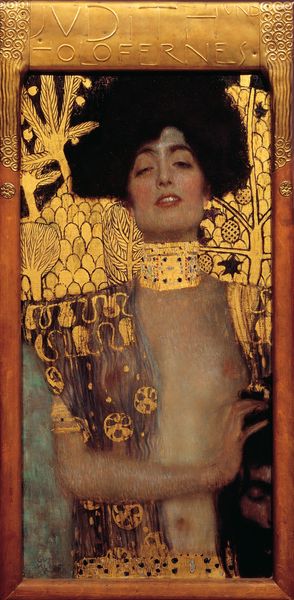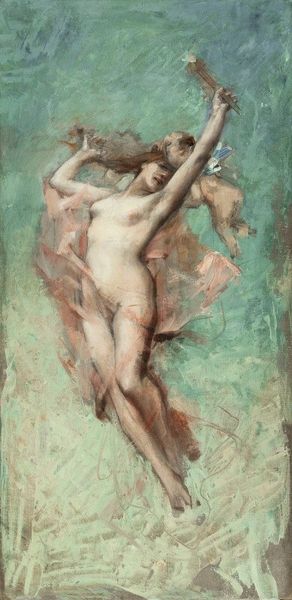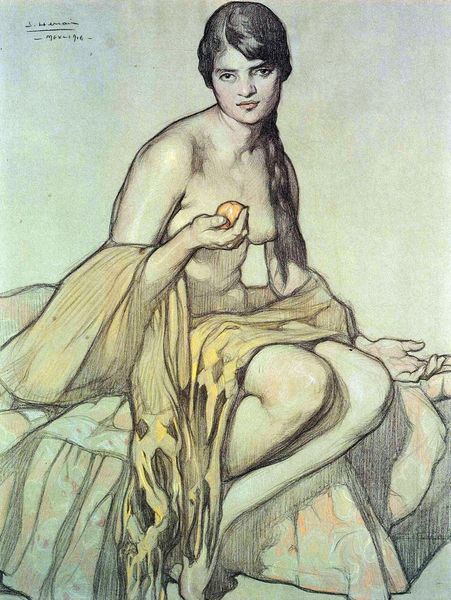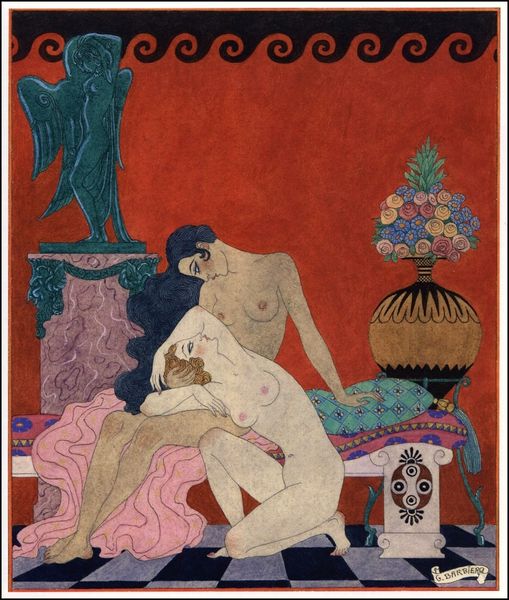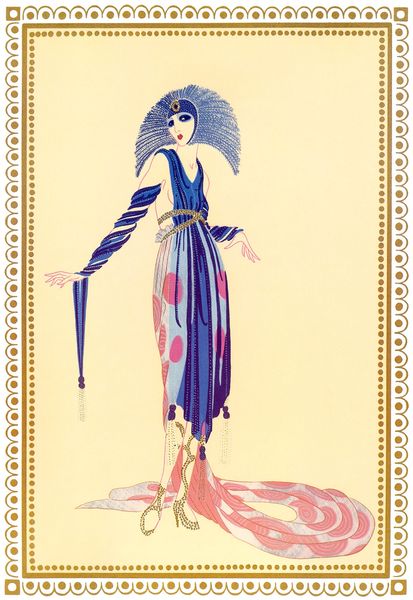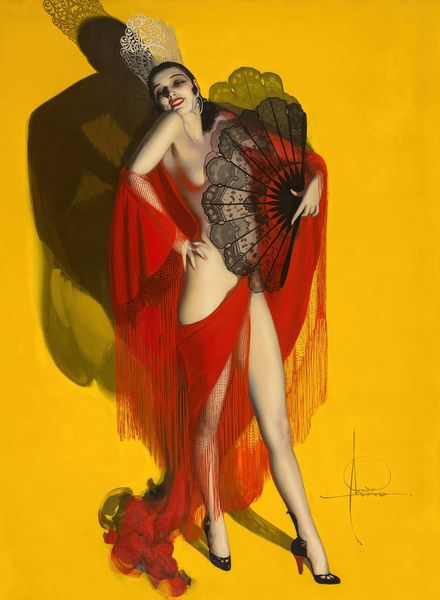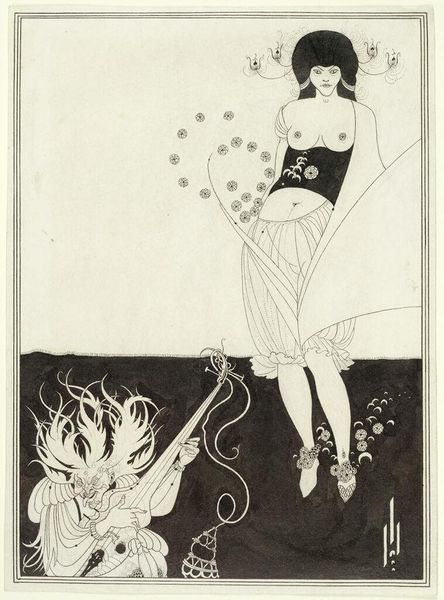
Copyright: Public domain
Editor: Florine Stettheimer’s “Portrait of Myself,” painted in 1923 with tempera, presents an intriguing composition. There’s a certain dreamlike quality to it, almost like a fashion illustration. How do you interpret this work? Curator: Let’s think about Stettheimer’s materials and processes. She’s using tempera, a medium that dries quickly and allows for meticulous detail, evident in the almost lace-like texture she creates. How does this medium contribute to the painting's overall effect, particularly its somewhat flattened, ethereal quality? Does this impact how you see it, compared to, say, an oil painting? Editor: I hadn't considered that. The tempera does seem to flatten the image, creating a more decorative surface than something deeply dimensional. It’s less about illusionism, perhaps more about presentation? Curator: Precisely. And consider the social context. Stettheimer was part of a wealthy, artistic circle. She controlled production within her art through purchasing decisions and choices about displaying/selling artworks and often depicted her social life and immediate network of women. How might her economic background and this tight social sphere have impacted her choice of materials and her approach to art-making? Editor: It makes me consider it less as a traditionally romantic "self-portrait," focused on emotional depth, and more as a carefully constructed image of herself as a producer and commodity in a very specific social scene, with careful attention to design. Curator: Exactly! By examining the materiality and social circumstances of its creation, we uncover richer understandings about both Stettheimer’s choices and intentions for this work. Editor: This gives me a whole new perspective – seeing how the choice of medium and her social positioning inform how we read the image. Curator: It all becomes about the conditions of production rather than artistic genius, no?
Comments
No comments
Be the first to comment and join the conversation on the ultimate creative platform.
